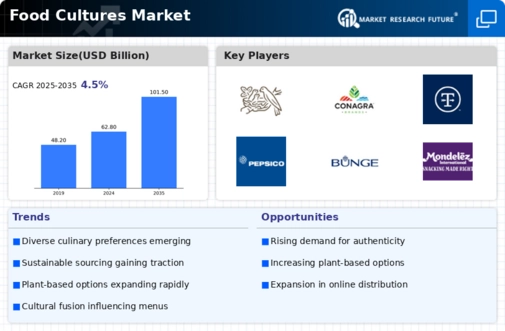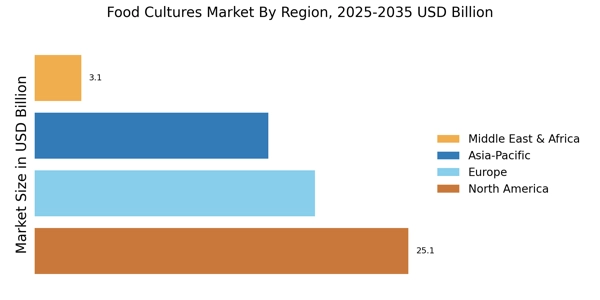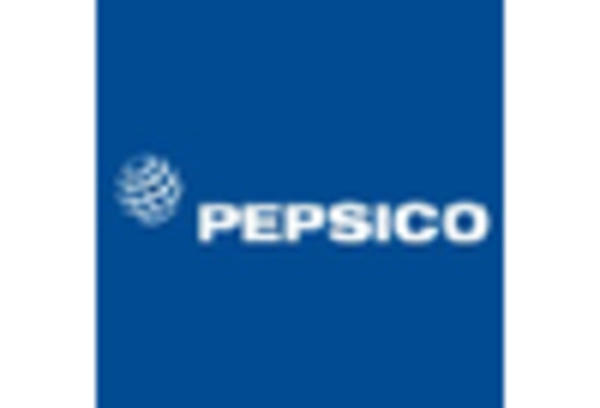The Food Cultures Market is currently characterized by a dynamic competitive landscape, driven by evolving consumer preferences and a growing emphasis on health and sustainability. Major players such as Nestlé (CH), Unilever (GB), and Danone (FR) are strategically positioning themselves through innovation and regional expansion. Nestlé (CH) focuses on enhancing its product portfolio with plant-based options, while Unilever (GB) emphasizes sustainability in its sourcing and production processes. Danone (FR) is increasingly investing in digital transformation to enhance consumer engagement and streamline operations. Collectively, these strategies not only enhance their market presence but also shape a competitive environment that prioritizes health-conscious and environmentally friendly products.
In terms of business tactics, companies are increasingly localizing manufacturing to reduce supply chain vulnerabilities and optimize logistics. The Food Cultures Market appears moderately fragmented, with key players exerting substantial influence over market trends. This structure allows for a diverse range of products, catering to various consumer segments while fostering competition among established and emerging brands.
In August 2025, Unilever (GB) announced a partnership with a leading tech firm to develop AI-driven solutions for personalized nutrition. This strategic move is likely to enhance Unilever's ability to tailor products to individual consumer needs, thereby increasing customer loyalty and market share. The integration of AI into product development signifies a shift towards more personalized consumer experiences, which could redefine competitive dynamics in the market.
In September 2025, Nestlé (CH) launched a new line of organic sauces aimed at health-conscious consumers. This initiative not only aligns with current consumer trends favoring organic and clean-label products but also reinforces Nestlé's commitment to sustainability. By expanding its organic offerings, Nestlé (CH) positions itself as a leader in the health-oriented segment of the Food Cultures Market, potentially attracting a broader customer base.
In October 2025, Danone (FR) unveiled a new sustainability initiative aimed at reducing its carbon footprint across its supply chain. This initiative includes investments in renewable energy and sustainable sourcing practices. Such actions are indicative of a broader trend within the industry, where companies are increasingly held accountable for their environmental impact. Danone's proactive approach may enhance its brand reputation and appeal to environmentally conscious consumers, further solidifying its market position.
As of October 2025, the Food Cultures Market is witnessing significant trends such as digitalization, sustainability, and the integration of AI technologies. Strategic alliances are becoming increasingly vital, as companies seek to leverage shared expertise and resources to enhance their competitive edge. Looking ahead, it appears that competitive differentiation will increasingly hinge on innovation, technological advancements, and the reliability of supply chains, rather than solely on price. This shift suggests a transformative phase in the market, where companies that prioritize these elements may emerge as leaders.


















Leave a Comment